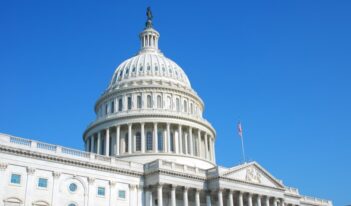
Alternative agency outreach methods can garner useful feedback and reduce pressure on the notice and comment process.
When the U.S. Congress enacted the Administrative Procedure Act (APA) in 1946 one of its most innovative aspects was the notice and comment process. Informal rulemaking itself was a novel approach to policymaking at the time, as many agencies previously had produced policy iteratively through decisions issued in individual cases. And the idea of allowing interested stakeholders to offer input to the agency that it was legally obligated to consider was perhaps the most unique feature of this new approach.
But the framers of the APA do not appear to have given extensive thought to the precise purposes the comment process would serve. On the one hand, based on a review of the legislative history, it appears that the drafters intended the comment process to provide useful technical input to the agency.
On the other hand, the drafters may have also intended it to provide a sort of democratic legitimacy by allowing the public to weigh in on an agency’s proposed actions. After all, the New Deal vastly expanded the federal regulatory state and vested extraordinary lawmaking powers in unelected agency officials, so notice and comment might have been one possible corrective that restored at least some of the policymaking power to the people.
But the APA is ultimately unclear on what role, if any, public opinion is to play in the rulemaking process.
This fundamental tension between the technical and democratic aspects of rulemaking has remained at the heart of the notice and comment process throughout its history. Are public comments intended to lead to more technically sophisticated rules, to give the general public an opportunity to influence the agency’s decision, or both?
This tension lay dormant for many decades because notice and comment was, and largely remains, an esoteric exercise that is known mainly to a handful of Washington insiders. Virtually all of the comments came from law firms, trade groups, corporations, and NGOs, especially environmental organizations. As a result, the technical versus democratic distinction was largely an academic one, as the only comments that really mattered were those that offered useful information for the agency to consider.
In recent years, however, this dynamic has begun to shift. As a result of technological developments, the notice and comment process has become better known, and e-rulemaking has made filing a comment easier. Of course, most rules still draw very limited participation. But a handful of high-profile rules, most notably the recent series of net neutrality Federal Communications Commission (FCC) rules, have drawn a massive public response involving millions of comments.
In examining these high-profile rules, a clear split between agencies’ and the general public’s perspectives on the notice and comment process is apparent.
In a recent report for the Administrative Conference of the United States (ACUS), for which I served as a coauthor, interviews with agency officials made it unmistakably clear that agencies view the comment process exclusively or almost exclusively through a technical lens. Our interviewees unanimously said that notice and comment is not a vote and that, to be useful, comments should contain actionable information and not mere expressions of opinion.
If one considers the public perception surrounding the net neutrality rulemakings, by contrast, it is clear that the general public reaches the opposite conclusion.
So where does this leave the notice and comment process? Will one perspective or the other win out? Or will government agencies just continue to muddle through, with all sides increasingly dissatisfied?
If agency policymakers take a step back, they may come to see this challenge as an opportunity to use technological developments to their advantage.
On the technical front, notice and comment represents a legalized version of a suggestion box, which is often the ideal mechanism for gathering dispersed information. On the policy front, it is hard to imagine a worse approach to ascertaining public opinion. No public relations firm, for instance, would design an opinion poll for which most of the intended recipients do not know it exists and participation is entirely on an opt-in basis. At least for purposes of determining public opinion, the notice and comment process is tailor-made to ensure that the most extreme, unrepresentative views are the only ones that register.
The APA framers did not, however, make a mistake in adopting notice and comment. It was the best conceivable approach at the time. And even now, in the vast majority of rules, it will represent the optimal approach in light of limited resources that can be dedicated to the problem. But for certain rules, it may make sense to supplement notice and comment.
Agencies already have a wide array of supplementary outreach tools at their disposal. These include advance notices of proposed rulemaking, federal advisory committees, stakeholder workshops, direct contact with affected groups, social media outreach, negotiated rulemaking (often known as “reg neg”), “reg neg lite,” and many other options.
International practice also offers useful precedent. The European Commission, for instance, undertakes a process similar to reg neg lite when it is considering a new piece of legislation: it invites the key stakeholders into the room, promotes a conversation, and then takes this input into account when drafting the law. China has, in certain cases, convened a citizens’ council to hear input from affected citizens when proposing new regulations.
Most of these options will be inappropriate to use in most rulemaking. In deciding what supplemental outreach, if any, it should undertake, the agency must be attentive to what it is attempting to accomplish with the rule and which “public” it seeks to engage.
If the rule is highly technical, undertaking expanded outreach to the general public is likely to be superfluous or worse, counterproductive, especially if it creates unrealistic expectations on the part of the public participants. Simple notice and comment might be ideal for these types of rules.
In other cases, the agency may want to expand its outreach to technical experts. For instance, if there is a debate among experts, the agency may wish to assemble an advisory committee. At the very least, it might consider reaching out to leading experts to obtain informal input prior to crafting a rule. New technologies such as video conferencing platforms make this sort of outreach far easier and cheaper than it was in the past.
If, by contrast, a proposed rule is likely to garner widespread public interest, the agency may consider undertaking some form of outreach that will provide an accurate picture of public opinion. To do this, the agency must be creative and careful. Tweeting about its proposed policy and seeing how the Twitterverse reacts, for example, is likely to be as unenlightening as counting comments.
A more productive approach might involve a crowdsourcing program such as IdeaScale, which allows users to engage with each other in online deliberation and provides a means for users to prioritize different options that emerge.
Convening a citizen advisory group, as I have proposed elsewhere, would be more useful still, as it would give the agency a sense of what well-informed citizens think. Any advisory group would be subject to the Federal Advisory Committee Act (FACA) and create costs for the agency, but videoconferencing software promises to decrease these costs.
Alternatively, the agency might use a form of reg neg lite in which it identifies the segments of the public most likely to be affected and then obtains their informal input, which avoids triggering FACA.
By pursuing these forms of targeted supplemental outreach, the agency would garner more useful feedback and alleviate some of the pressure on the notice and comment process. Because commenting is the primary mechanism for influencing agencies during the rulemaking process, participants have an incentive to maximize their influence, which has resulted in a system that is optimal for neither stakeholders nor agencies.
Stakeholders are frustrated by their lack of influence in what they see as a democratic process. Agencies are frustrated by the high volume of input they receive that often offers little value in a process they see as essentially technocratic.
By pursuing reforms along the lines of those outlined above, agencies may be able to obtain more useful feedback from the public while simultaneously ensuring that individual members of the public have a meaningful opportunity to participate and be heard. And ideally, these reforms will also help the agency reduce the number of comments filed merely to attempt to register a vote.
The views expressed are those of the author and do not necessarily represent the views of the Administrative Conference of the United States or the federal government.
This essay is part of a six-part series entitled Mass Comments in Administrative Rulemaking.




